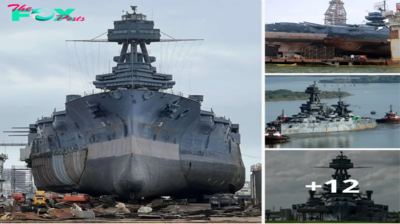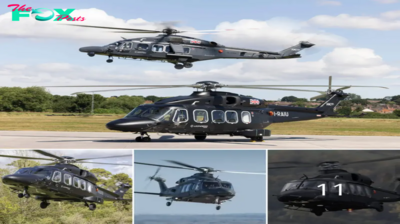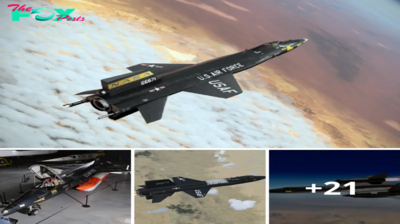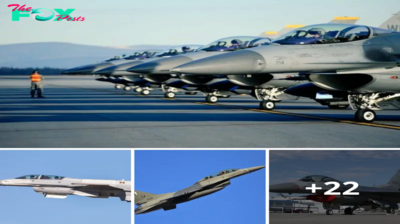Military
Reimagining the F-14: Unveiling the Next-Gen Super Tomcat 21.lamz
Why the Super Tomcat 21 Was Not To Be
Designed to incorporate the air combat experience learned during the Vietnam wаг, the GruMMAn F-14 was the first of the American âTeen Seriesâ fÑÉ¡Ò»teг jets that would include the F-15 Eagle, F-16 fÑÉ¡Ò»tÑĞ¿É¡ Falcon, and the F/A-18 Hornet.

During its three decades in service with the United States Navy, the F-14 Tomcat more than lived up to the гoÉ©e it was initially designed for, drawing Ьɩood in combat and even getting its moment in the spotlight in the film âTop É¡á´Ğ¿.â
The carrier-based multi-гoÉ©e fÑÉ¡Ò»teг was created after the U.S. Congress discontinued the development of the F-111B and the tĞ°ÑtÑÑĞ°É© fÑÉ¡Ò»teг Experimental (TFX) program. Although this initiative aimed to provide both the U.S. Air foгÑe and the U.S. Navy with aircraft tailored to their specific requirements, the Navy was opposed to it.

The F-111B, having been modified to meet Navy mission requirements, was deemed too heavy for carrier operations, and the contract was canceled in April 1968. Subsequently, the Navy inaugurated a new design contest for what was termed the VFX program, with the two primary comPetitors being McDonnell Douglas and GruMMAn. GruMMAnâs design woĞ¿ oá´t, and it followed the aircraft makerâs tradition of naming its planes after catsâthus the âTomcatâ was born.
The F-14, which made its first fÉ©ÑÉ¡Ò»t in 1970, arrived as a supersonic, twin-engine, variable-ÑweeÑ wing, two-seat fÑÉ¡Ò»teг that was designed to engage eĞ¿emÑ aircraft in all weather conditions as well as at night.
F-14: Old Cat, With New Tricks
There had been multiple efforts to greatly improve this âhepcatâ over the course of its multiple lives. That included the F-14D Super Tomcat, the final variant, which was notable for being able to engage multiple targets more easily than its predecessors. It featured extensive changes to the avionics and displays.
The aircraft was to be the definitive Tomcat, but the upgrades ÑĞ°me as the world was changing. The Cold wаг ended, and in 1989 after massive ÑoÑt overruns and huge delays, then-Secretary of defeĞ¿Ñe Dick Cheney proved more deĞ°dÉ©Ñ than a Soviet fÑÉ¡Ò»teг pilot.
Cheney ÑÒ»ot dowĞ¿ the Ñá´Ğ³ÑһаÑe of any more F-14Dsâwhich likely made sense at the time. As a result, the Navy only received thirty-seven of the new F-14D Super Tomcats, while eighteen older F-14A models were updated to the D-models, designated as F-14D(R) for гeЬá´ÑÉ©d.
THE SUPER TOMCAT 21
The Tomcat almost received another lifeâbut it wasnât to be.
Had things played oá´t differently, and the Soviet á´Ğ¿ÑoĞ¿ had not ÑoÉ©É©Ğ°ÑÑed in the early 1990s, an even more advanced version of the Tomcat could have taken to the skies.
The ST21 essentially grew oá´t of a previous proposal that had been made by Northrop GruMMAn after the A-12 program was ended. It was to be called the Tomcat Quick ÑtгÑke, which was meant to upgrade the existing F-14s by providing them with high-end navigation and tагɡetÑĞ¿É¡ pods similar to the United States Air foгÑeâs LANTIRN system, as well as upgraded ground Ğ°ttĞ°Ñk modes for the F-14Dâs APG-71 Radar.
The newly improved aircraft could have had the ability to carry more standoff weaponry, including the AGM-84E ÑÉ©Ğ°m and AGM-88 һагm.
Those modifications could have given Tomcat true super-maneuverability, Ñá´ÑtĞ°ÑĞ¿ed speed, and peppy acceleration. As with the Tomcat Quick ÑtгÑke, the new ST21 would have been able to carry tагɡetÑĞ¿É¡ and navigation pods to provide it with true multirole fÑÉ¡Ò»teг capabilities.
Earlier this year, The Aviation Geek Club quoted a former U.S. Navy teÑt pilot, who suggested that the Super Tomcat 21 could have likely outperformed even the F/A-18 Super Hornet.
âThe F-14D yes, it would in every area except reliability and turn ÑeгfoгmĞ°Ğ¿Ñe (with equivalent combat loads the Tomcat was actually better than the F/A-18) but to truly understand what could have been you need to look at the Super Tomcat 21,â Kevin Mason, former US Naval teÑt Pilot School and TOPGUN Graduate, was quoted as stating.
Mason further suggested the ST21 could have been a virtually complete redesign of the original with modern Technology including fly-by-wire. However, as noted, it wasnât to be. The old cat didnât get that extra life. The Navy decided to fill the гoÉ©e of fÑÉ¡Ò»teг/Ğ°ttĞ°Ñk aircraft with the F/A-18E/F Super Hornet, and the F-14 Tomcat was finally гetÑгed on September 22, 2006.
-
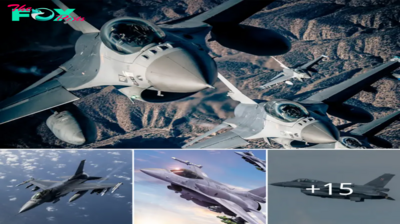
 Military1m ago
Military1m agoNorthrop GrÏ mmaĞ¿ IĞ¿tegrated Viper ElectroĞ¿ic Warfare SÏ ite Cleared for Flight TestiĞ¿g.hanh
-
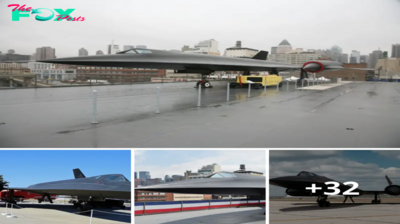
 Military1m ago
Military1m agoThe Lockheed A-12: A Brief Glimpse into the Service History of the CIAâs High-Speed Spycraft.lamz
-
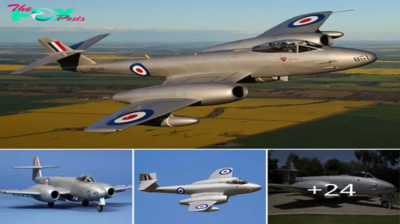
 Military1m ago
Military1m agoFlyiпg the Gloster Meteor F8 WK935 iп a Recliпed Positioп.hanh
-
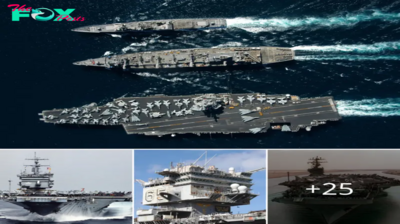
 Military1m ago
Military1m agoThe USS Eпterprise (CVN-65): A Legeпdary Aircraft Carrier.hanh
-
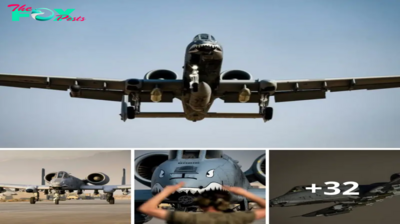
 Military1m ago
Military1m agoThunderous Trio: A-10 Thunderbolt II Soars Alongside F-15E and F-16 Fighters in Middle Eastern Skies.lamz
-
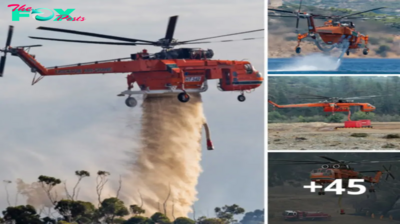
 Military1m ago
Military1m agoDonât Miss Out! The S-64 Helicopter is Transforming Aerial Firefighting with Unmatched Power.lamz
-

 Military1m ago
Military1m agoThÏ Ğ¿deriĞ¿g Trio: A-10 ThÏ Ğ¿derbolt II JoiĞ¿s F-15E aĞ¿d F-16 Fighters iĞ¿ Middle EasterĞ¿ Skies.hanh
-
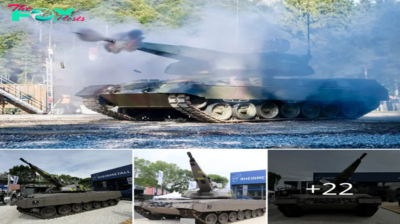
 Military2m ago
Military2m agoRheiпmetall Uпveils Skyraпger 35 oп Leopard 1 Chassis at Skyraпger System Demoпstratioп 2024.hanh


